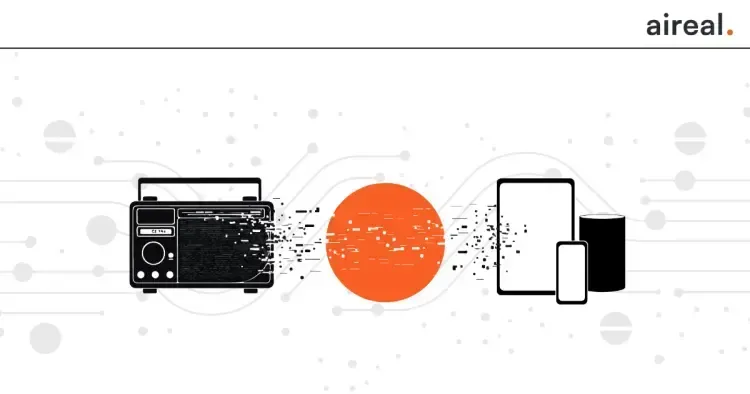Closing the gap - How broadcasters and marketers can secure the future of radio as an advertising medium


Anyone working in the radio and audio industry - especially in marketing - has had the feeling for some time that other media channels are gaining a technological edge. As traditional channels, TV and DOOH in particular offer more relevant and flexible marketing options today, react more quickly to changes and are thus leaving radio behind - especially in terms of sales.
Their recipe: orientation towards digital media channels.
For radio producers and marketers, on the other hand, "ad tech" is a dimension that has been neglected to date. Now they have to assert their position in the inter- and intra-media competition for advertising euros.
There are particular hurdles within the company's own structures. Existing systems have been upgraded over the years and functionally bent for so long that every adjustment, no matter how small, becomes a project lasting several weeks. Added to this are long, error-prone rollout processes and installations.
The bitter truth: existing structures are simply not designed for the new realities.

In a market that is constantly and rapidly changing, the radio industry cannot afford to be left behind technologically. In order to not only catch up, but to keep up with the pace in the future, a fundamental rethink is necessary. What the industry needs are solutions that are on a par with digital competitors. In terms of technology, user-friendliness, adaptability and speed.
Change is not the enemy
This necessary technological change is a great opportunity!
Combined with the huge reach of radio, modern and above all centralized, flexible platforms can not only open up completely new sources of revenue, but also map existing and established market models 1:1.
Combinations or condition agreements are easy to display and can be configured within minutes. Terrestrial inventories can be connected and assigned rules in the same way as podcasts or streamed audio. Or all this is available in a convergent, automatically optimized combination.
Accepting the new does not mean losing what you have learned.
It all comes down to access
Access to any audio inventory must be drastically simplified and accelerated through new tools and the adaptation of digital standards - e.g. programmatic.
Self-service booking systems are already being used for direct booking. This makes radio interesting for new, less specialized customer groups, while programmatic interfaces connect large agencies and their DSPs to the inventories.
ma, VuMa or other data is available at all times and enriches advertising spaces together with 1st party data from the individual publishers.
And since all marketing channels access a common inventory management system, publishers have more transparency and control options than ever before.
Away from silos, towards centralized data streams
However, the above requires new thinking when it comes to the underlying technology. People often work with a veritable zoo of separate systems that communicate with each other via interfaces. This method is very common, but has long since proven to be too slow and inefficient.
Instead, central platform structures will be used in the future, whose use and range of functions will be controlled by a powerful rights system.
This not only provides more control over inventory flows, but also accelerates the development of new functions to an unprecedented extent.
In future, radio stations and marketers will be able to analyze, control and report their revenue streams and campaigns in real time, which will significantly increase attractiveness and revenue opportunities. Maintenance and further development are already radically simplified today, as adjustments do not have to be made and coordinated on several isolated systems and data silos.
Don't fall into the same trap
In this transformation, the radio industry has the opportunity to learn from the digital genres and do better. There, long technology chains have emerged in which numerous tools with opaque added value and cumulative earning models have been connected in series. All at the expense of precision, transparency and economy, and ultimately trust. Reversing this process - if at all possible - leads to enormous effort and conflict. Radio should act correctly from the outset and keep the system chains used as short as possible.
Seeing technological change as an opportunity
Modernizing the radio industry and its marketing is neither a quick nor an easy task. However, it is clear that although technological change is unstoppable and uncomfortable at first, it is also the key to catching up with other genres. Radio has the opportunity to reinvent itself, to do everything right from the start and to participate in previously unattainable sources of revenue - because they are increasingly digital.
Flexible, controllable technology that is measured against the digital market is the decisive and absolutely indispensable building block here. Only those who are able to constantly and quickly adapt their systems and processes to the changing requirements of the market will remain relevant in the long term and secure and expand their market share.
Would you like to seize the opportunities of change and finally close the gap to the digital market with new tools?
Let's start a conversation under contact@airealgroup.com.
